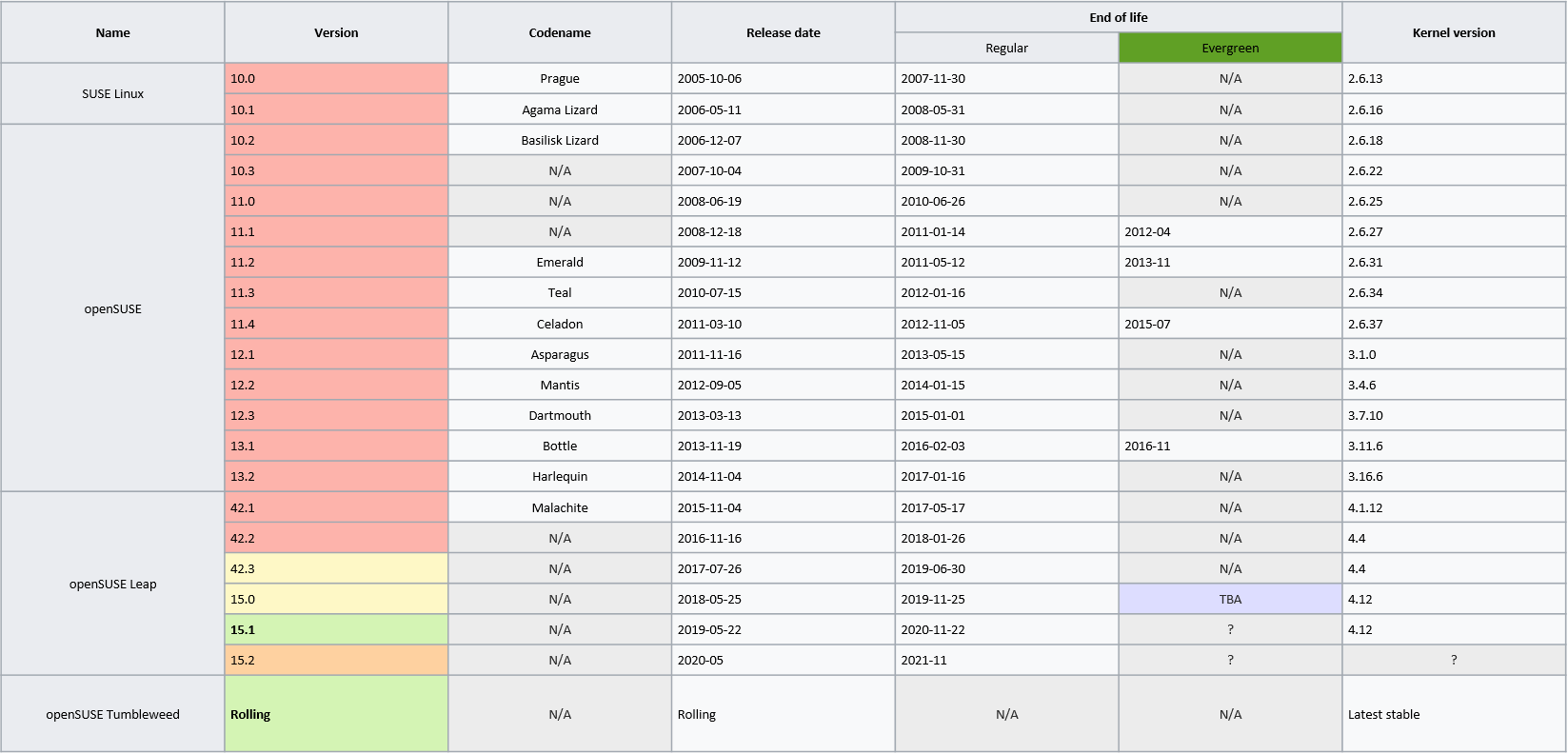openSUSE Tumbleweed and openSUSE Leap are two general-purpose Linux kernel- based GNU /Linux operating system developed and maintained by the openSUSE project community, supported by SUSE.
Before talking about the differences between these versions of openSUSE, let’s have a brief look at its background and features. Earlier it was known as SUSE Linux but after a software company Novell acquired SUSE Linux in February 2004, Novell decided to release SUSE Linux Professional with 100% open source products, and as an open source project, this Linux got its prefix i.e Open. Later it split from Novell and became a separate brand.
openSUSE inherits its properties from SUSE Linux Professional and the successor of the same. SUSE also offers open source-based enterprise-class OS known as SUSE Linux Enterprise Server.
openSUSE Linux community is backed by the SUSE for further research and developments. It uses the easy-to-use YaST package management system and has great advantages for a small and medium-sized enterprise server. Using YaST2 can make the configuration of the server simpler and faster. SuSE Enterprise Linux can be used for large server systems too. When it comes to Linux, everyone knows that Linux is a very secure OS, and openSUSE is not an exception. Apart from the YaST Package manager, it also supports self-developed Zypper (ZYpp) and RPM. It uses KDE5 as the default desktop environment and also provides the GNOME, MATE, LXQt, Xfce…
Now come to the main agenda of the article which is the difference between openSUSE Tumbleweed and Leap?
There is no Kernal or core difference if you see them as laymen eye, however, for developers/Linux enthusiasts and enterprises there are.
In addition to providing a distribution, the openSUSE project also includes an Open Build Service. The purpose of openSUSE is to provide a stable foundation and allow users to get additional and more updated software through the Open Build Service, even a rolling release. Hence the version of SUSE Linux operating system that receives latest rolling versions of OpenSUSE with stability called Tumbleweed. If you opt openSUSE Tumbleweed to install over openSUSE Leap on your system then you don’t have wait for long periodic cycles to get the latest versions as unlike we see in CentOS. That means more chance to experience and test new things or applications. It doesn’t limit to the kernel or core updates but also includes 3rd party kernel driver module, developer applications, IDE’s, Desktop apps and lot more…
On the Other hand, if you talk about the openSUSE Leap Linux distribution, it is more stable and only uses the well-tested base of SUSE Linux Enterprise (SLE). This means for enterprises or data centres running crucial applications that need the reliability of the operating system, they can go for OpenSUSE Leap. The release cycle of openSUSE leap versions is around one year and get extended support for up to 2 years before finally achieve End of Life. However, in some previous versions of openSUSE, there were some Evergreen releases that were supported around 5 years but yet there is nothing has been announced like that for Leap distribution.
Well! if you are new Linux developers, administrators or some enterprise that want to receive core updates for stability and security to run their life-saving Linux applications on this versatile OS instead of a frequent overhaul, then go for OpenSUSE Leap.
openSUSE Tumbleweed and Leap release cycle
Note: Click on the table to see in full size


Related Posts
How to install Winget package manager in Windows 2022 Server
How to View Listening Ports Using Netstat
How to Install Pygame Zero on Windows 11
Single Command to install Android studio on Windows 11 or 10
How to Install DoXygen in Windows 11 or 10
Google Rolls Out Android 14 Beta 4.1 to Fix Bugs for the Pixel Fold and Tablet